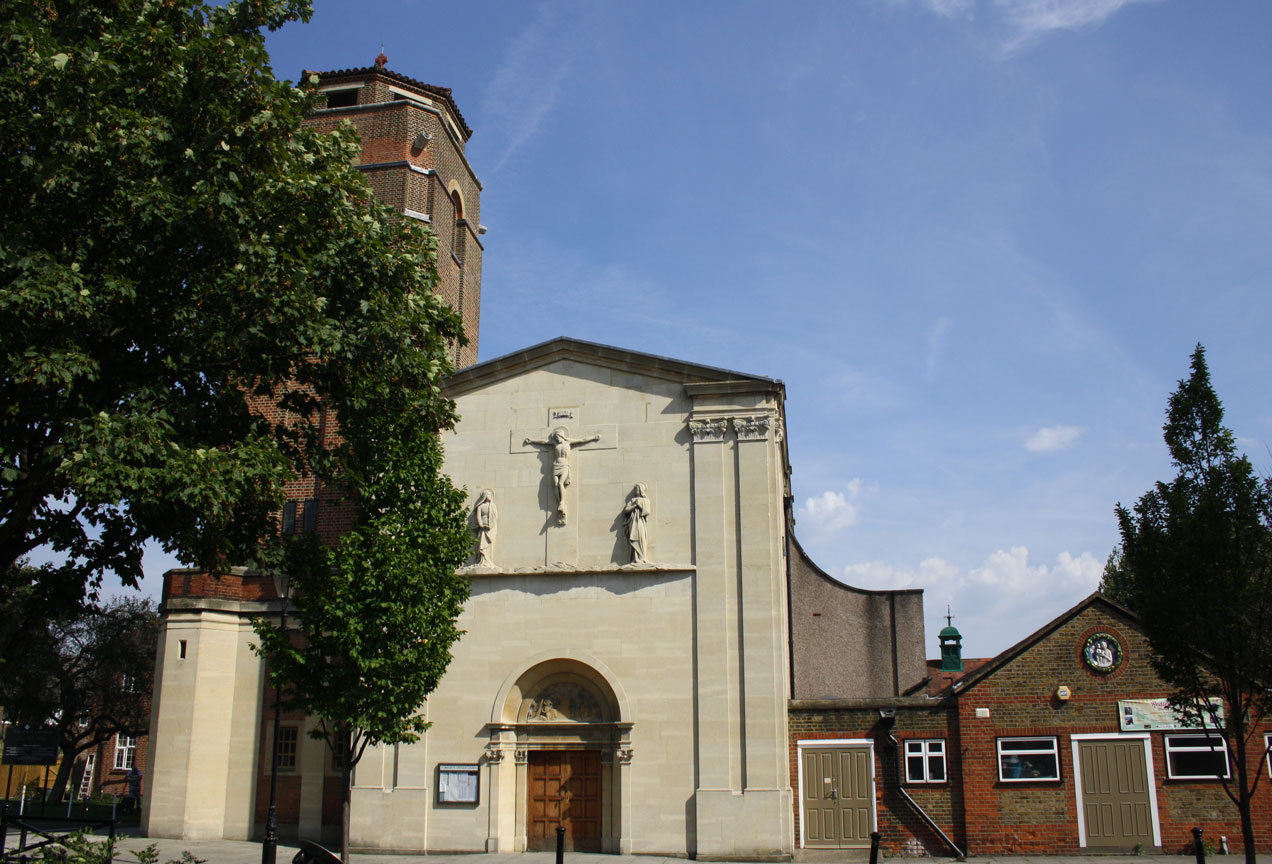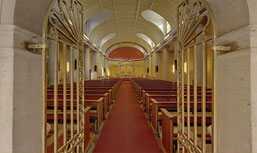The Community TodayThe Catholic community in Isleworth has a very long history, spanning more than 250 years but the parish of Our Lady of Sorrows and St Bridget, as we know it today, emerged in the period 1906 to 1929 under the leadership of Father Eric Green. He was building on firm foundations. He was supported by a large congregation, which included a number of influential, talented and wealthy lay people. It was at the same time socially very diverse and, like most Catholic communities in England, most of its members were poor. |  |
| Father Green came to serve at Isleworth in 1906 and found a large and growing Catholic population (he estimated it at 1,200-1,300) served by a small back street chapel with a capacity of 200. There were several religious houses and a number of schools. A poor school for boys was attached to the chapel and the nuns of Gumley House provided one for girls. Gumley House also provided a convent boarding school for older girls. Father Green was an able and enterprising priest who had a gift for mobilising support. Like the Church as a whole, he gave priority to education and built a new boys' school. The confidence of the Catholic community was growing at this time and under his leadership initiatives were taken that demonstrated that confidence and a desire to engage fully in civic affairs. In 1907, he started the annual outdoor procession in honour of the Isleworth Martyrs. He went on to organize the construction of a new church in a prominent position at a main road junction on the edge of the village. The new church was consecrated in 1910. The First World War hit Isleworth hard. In all, 386 Isleworth men lost their lives. The townspeople subscribed to build the town war memorial, which is sited in the square outside the church and was designed in a style sympathetic to the façade of the church. | |
 |
Father Green died in 1929 and is buried in Isleworth Cemetery but the community and his successors have continued to build on the foundations laid in the period of his ministry. |
- 020 8560 1431
- isleworth@rcdow.org.uk
Quick Links
360 Virtual Tour
St Bridgets Parish

Our Lady of Sorrows and St Bridget of Sweden,
Memorial Square,
112 Twickenham Road,
Isleworth
TW7 6DL, UK




